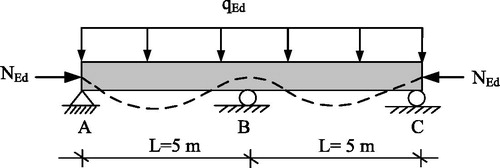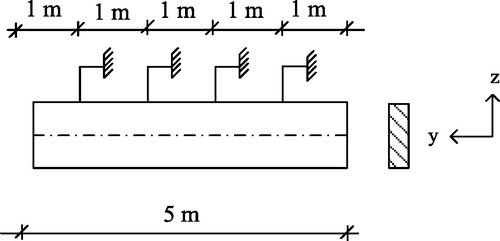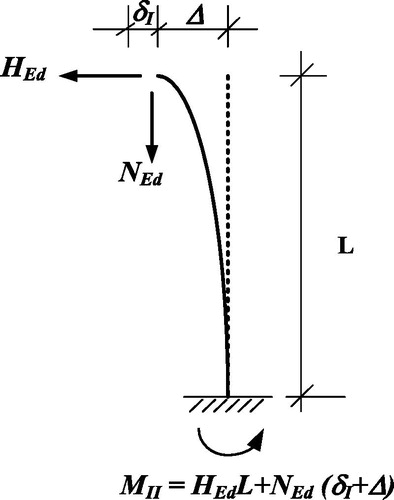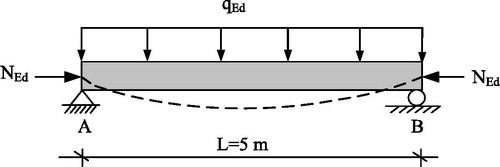Figures & data
Table 1. Material properties of glulam timber with strength class GL32c.
Figure 2. A continuous beam on three supports. The dashed line is the assumed buckling curve of the beam.

Figure 3. Discrete bracing of the beam () at the upper level of the beam (compressive edge) with lateral supports.

Figure 5. Discrete bracing of the beam () at the upper level of the beam (compressive edge) with lateral supports.

Table 2. The effect of beam dimensions on the beam stability, , with different interaction formulae.
Table 3. The effect of beam dimensions on the beam stability, , with different interaction formulae.


